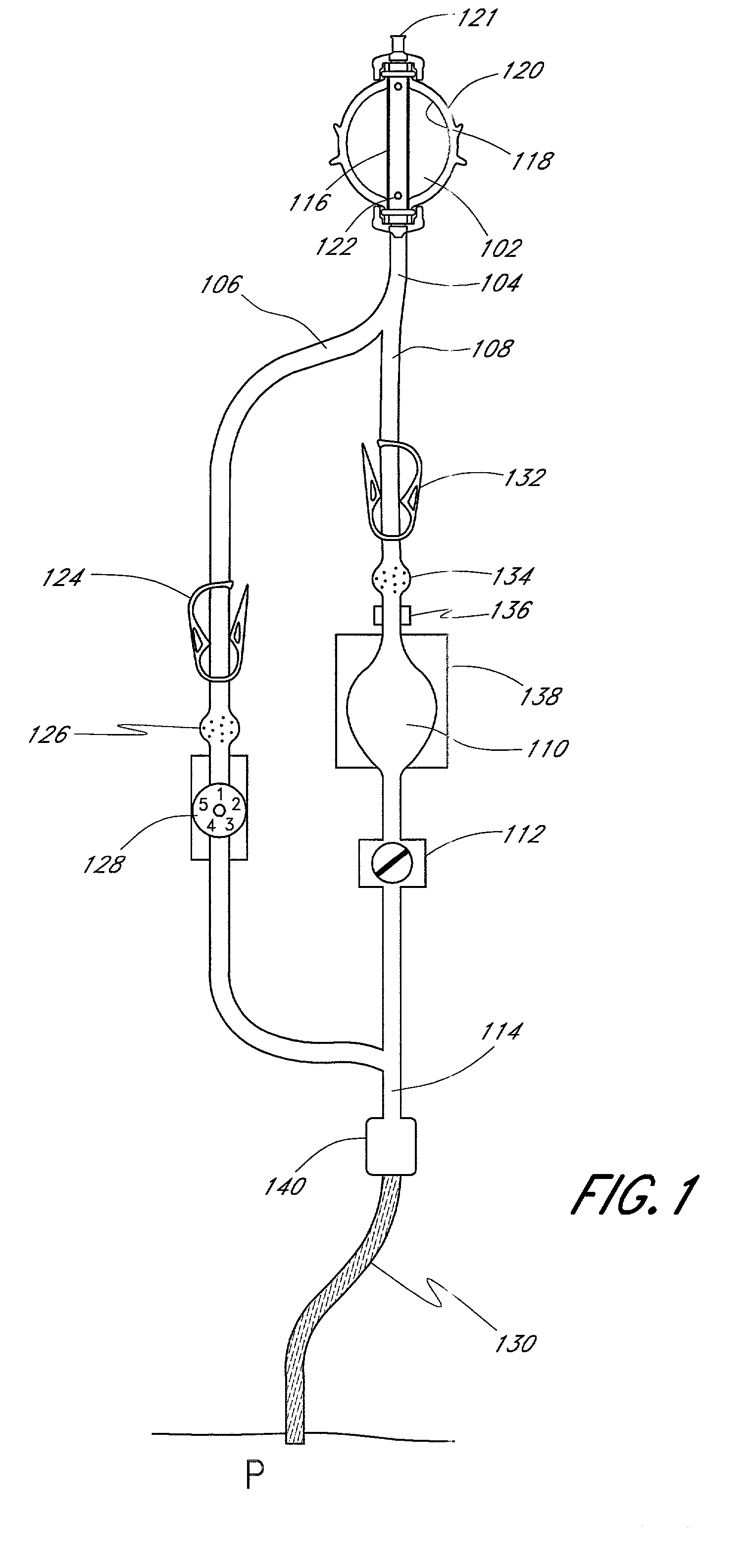Large volume bolus device and method
a bolus and large-volume technology, applied in the direction of intravenous devices, other medical devices, infusion needles, etc., can solve the problems of patients not being able to properly control the amount of fluid they receive, the danger of self-administration of certain medicinal fluids, and prolonged hospital stays and monitoring by medical sta
- Summary
- Abstract
- Description
- Claims
- Application Information
AI Technical Summary
Benefits of technology
Problems solved by technology
Method used
Image
Examples
Embodiment Construction
[0024]Referring now to the drawings, FIG. 1 illustrates a schematic view of one embodiment of the fluid dispensing device and method. The device comprises a pressurized fluid source or pump 102 that holds medicinal fluid, such as local anesthetics. The pump 102 forces the medicinal fluid through a conduit 104. The conduit 104 splits into a continuous or primary flow path 106 and into a controlled bolus flow path 108 for delivery into a wound site nerve bundle or the blood stream of a patient P. A large volume bolus reservoir 110 accumulates a large quantity of fluid from the bolus flow path 108 and holds the fluid under pressure until the bolus dose is triggered by an actuator 112 for release into the patient P. Downstream from the bolus reservoir 110, the continuous flow path 106 and the bolus dose flow path 108 converge into a single flow path 114 to the patient P.
[0025]The pump 102 preferably accommodates about from 100 to 500 ml of fluid under 10–15 psi. The pump 102 has an inne...
PUM
 Login to View More
Login to View More Abstract
Description
Claims
Application Information
 Login to View More
Login to View More - R&D
- Intellectual Property
- Life Sciences
- Materials
- Tech Scout
- Unparalleled Data Quality
- Higher Quality Content
- 60% Fewer Hallucinations
Browse by: Latest US Patents, China's latest patents, Technical Efficacy Thesaurus, Application Domain, Technology Topic, Popular Technical Reports.
© 2025 PatSnap. All rights reserved.Legal|Privacy policy|Modern Slavery Act Transparency Statement|Sitemap|About US| Contact US: help@patsnap.com



